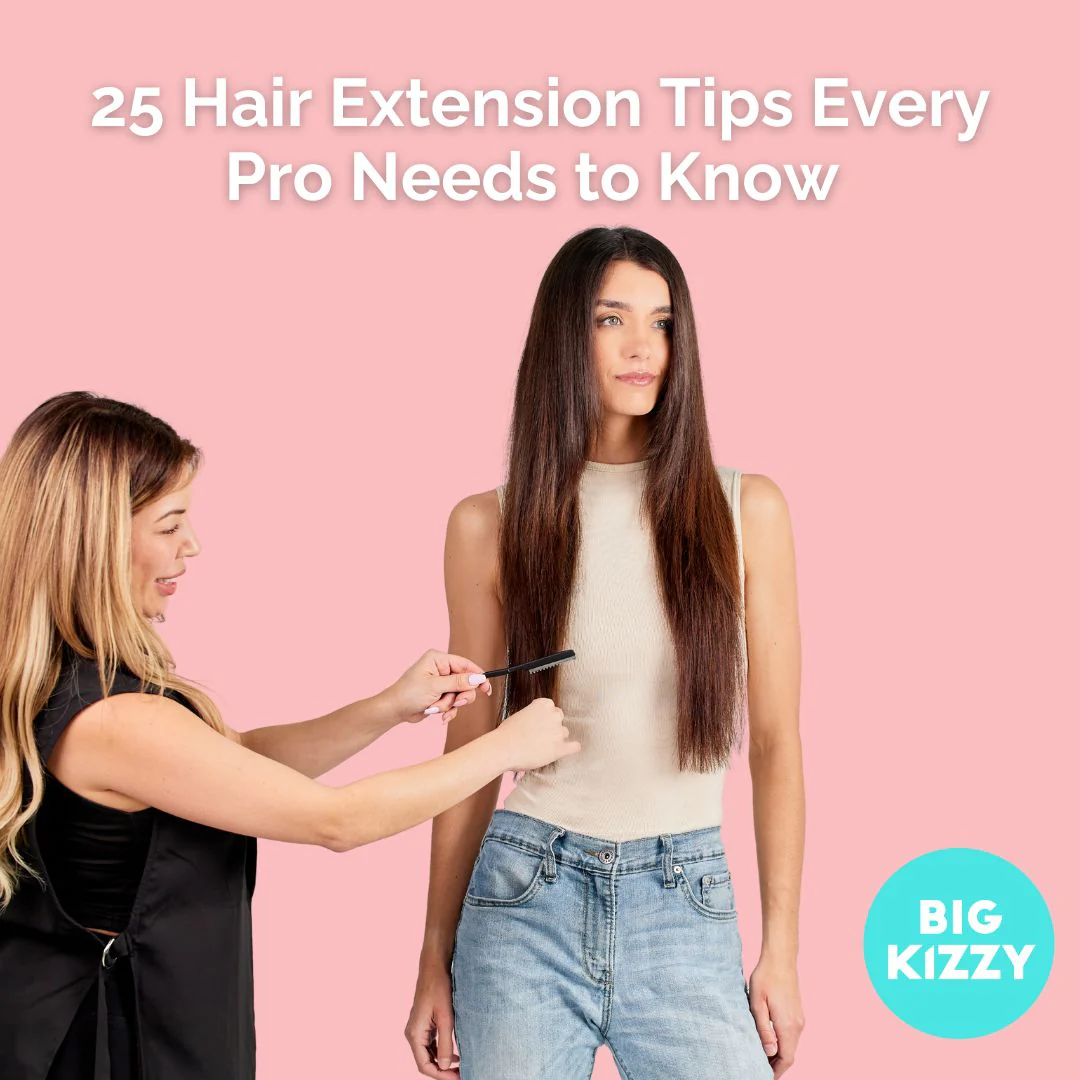Hair Extension Methods: A Comprehensive Guide
Source: Hair Extension Magazine
If you’re exploring hair extensions, it’s essential to understand each method’s unique features—cost, application time, comfort, and care requirements. Here’s an in-depth look at the top techniques:
1. Tape-In Extensions
-
What they are: Thin hair wefts taped together with adhesive.
-
Pros: Fast to apply (30–90 mins), flat and natural, minimal damage, reusable up to 6–8 weeks.
-
Cons: Avoid oils around the tape, and may weaken with regular swimming or silicone-based products.
2. Cold Fusion / Micro-Link / I-Tip
-
What they are: Individual strands attached using silicone-lined micro beads—no heat or glue.
-
Pros: Natural movement, reusable, safe for thick hair.
-
Cons: Application takes 2–6 hours, beads can be visible, may cause scalp tension or slight headaches, not ideal for fine hair.
3. Hot Fusion / Keratin Bonded
-
What they are: Individual strands bonded with keratin using heat.
-
Pros: Long-lasting—up to 6 months, blends well with natural hair.
-
Cons: Uses heat (risk of damage), requires a skilled stylist, lengthy installation time (4–8 hours).
4. Sew-In / Weave Extensions
-
What they are: Hair wefts sewn into braided cornrows.
-
Pros: Durable and suitable for very textured hair, no heat or glue used.
-
Cons: Can feel heavy, tight braiding may cause headaches or tension, challenging to wash underneath, and risk of hair loss from tension.
5. Glue-In Extensions
-
What they are: Wefts affixed with adhesive for short-term use.
-
Pros: Quick, ideal for event styling.
-
Cons: Short lifespan, risk of damage if removed improperly, adhesives can irritate or cause hair breakage.
6. Clip-In Extensions (Bonus)
-
What they are: Temporary wefts clipped onto natural hair.
-
Pros: Easy to apply and remove in minutes, no salon visit required, great for occasional change.
-
Cons: Not suited for fine hair (clip weight), must be removed before sleeping or showering.
🛠 Choosing the Right Method for You
-
Hair type & texture
-
Fine hair → clip-ins, tape-ins
-
Thick/coarse hair → fusion, sew-ins
-
-
Application time & budget
-
Quick fix → clip-ins or glue-ins (~1 hr)
-
Long-term commitment → fusion, cold fusion, sew-ins (2–8 hrs)
-
-
Maintenance
-
Re-tape or re-bead every 6–8 weeks
-
Care includes gentle washing, avoiding oils near attachments, and using a silk pillowcase
-
-
Scalp comfort
-
Opt for no-heat solutions (cold fusion, tape-in) if you have a sensitive scalp
-
✨ Final Tips
-
Always consult a licensed stylist familiar with different extension methods.
-
Start with a method that suits your current lifestyle and hair health.
-
Prioritize aftercare—proper maintenance extends the life of your extensions and protects your natural hair.
This guide offers a clear comparison of eight popular hair extension methods, helping you make a confident choice. Want personalized advice or product recommendations for your hair type? Contact us anytime!



